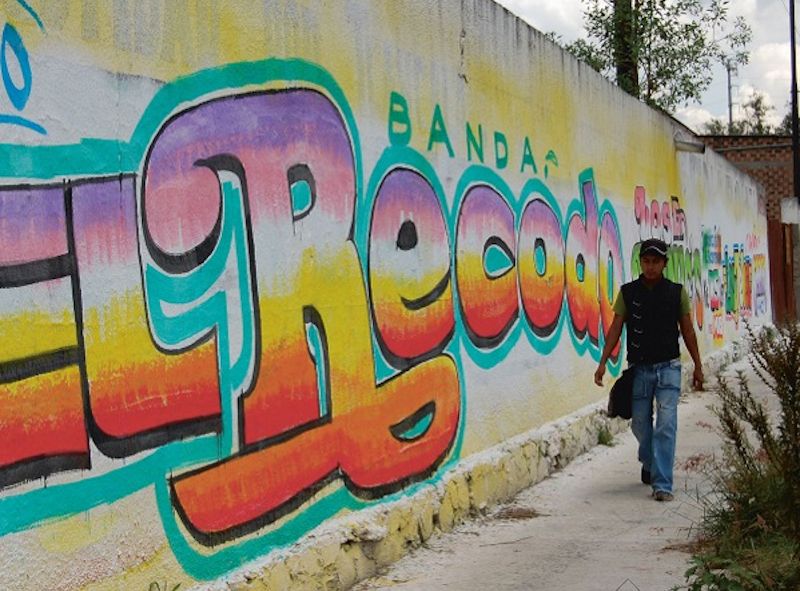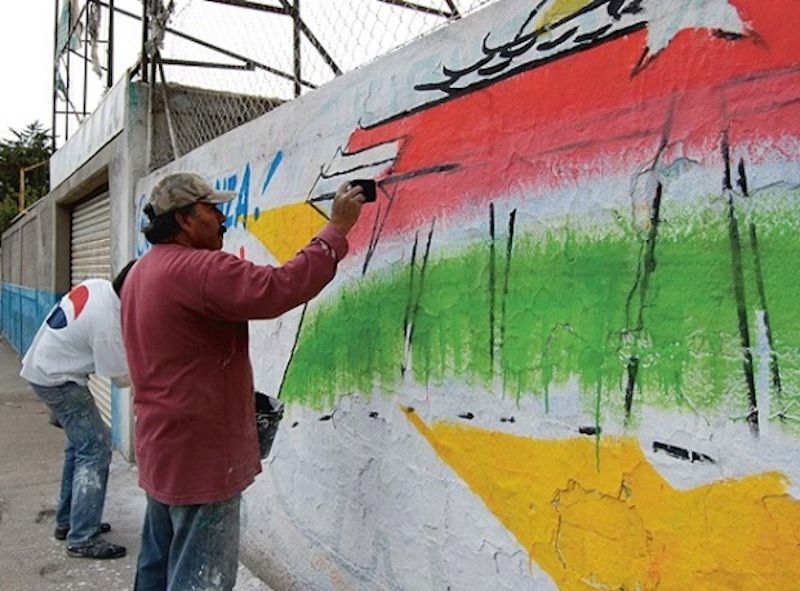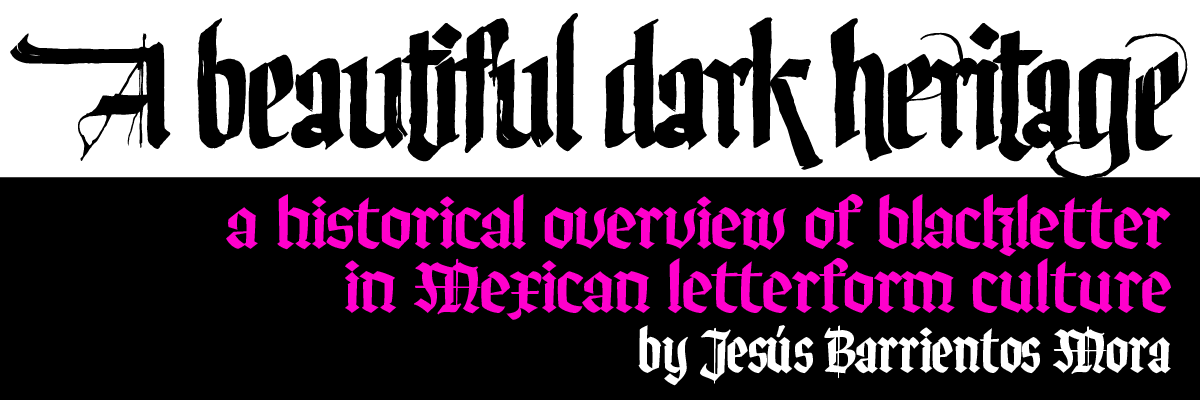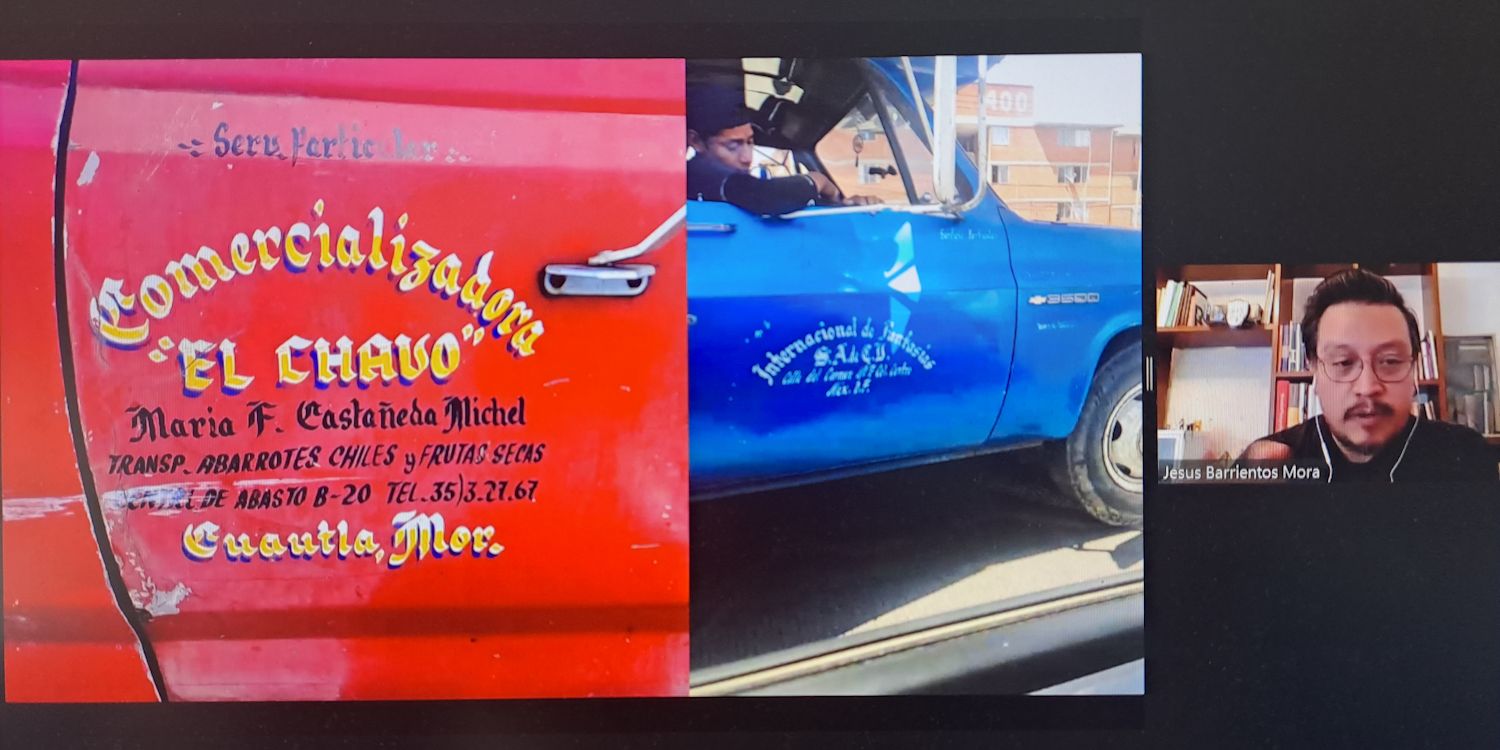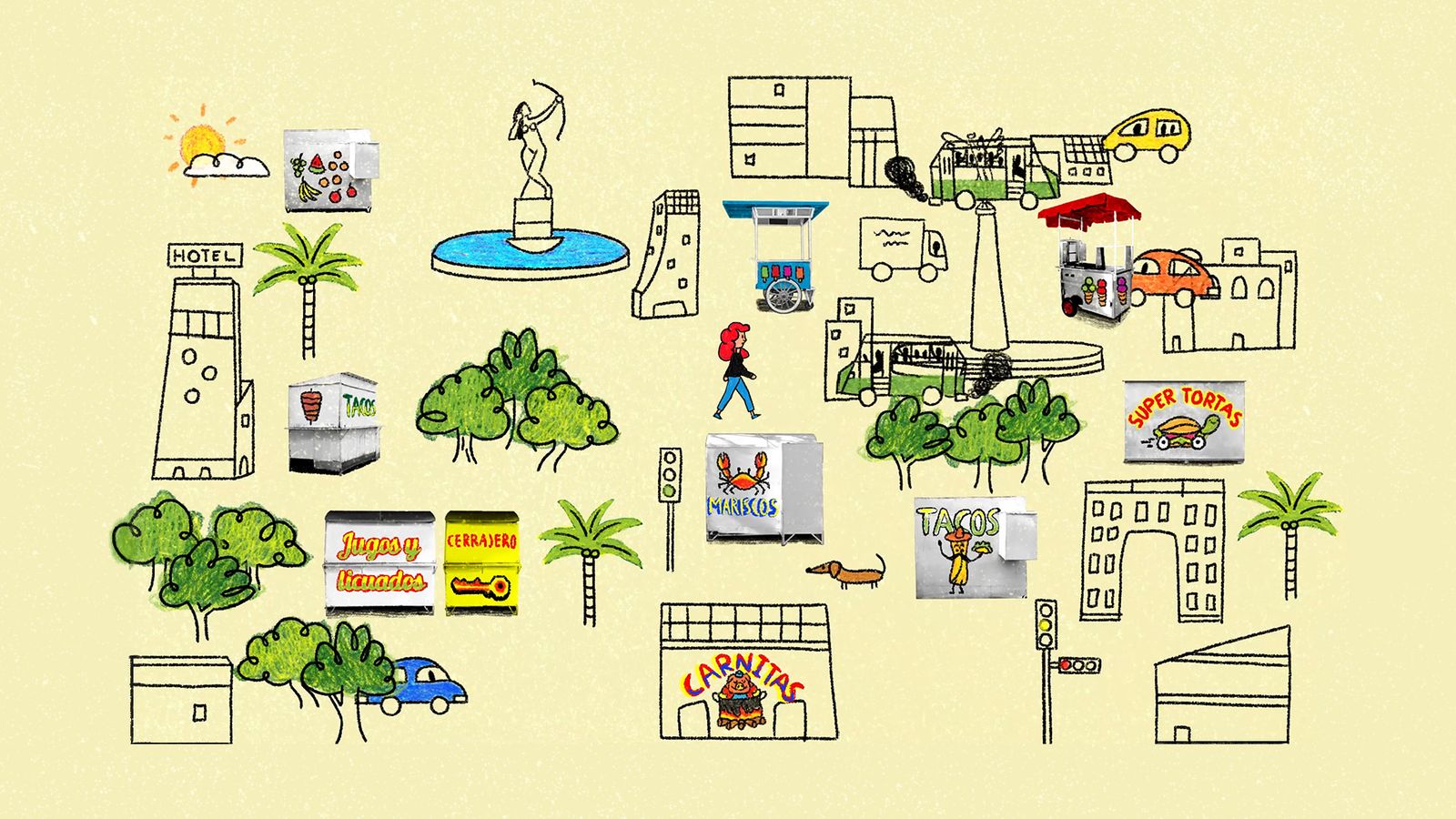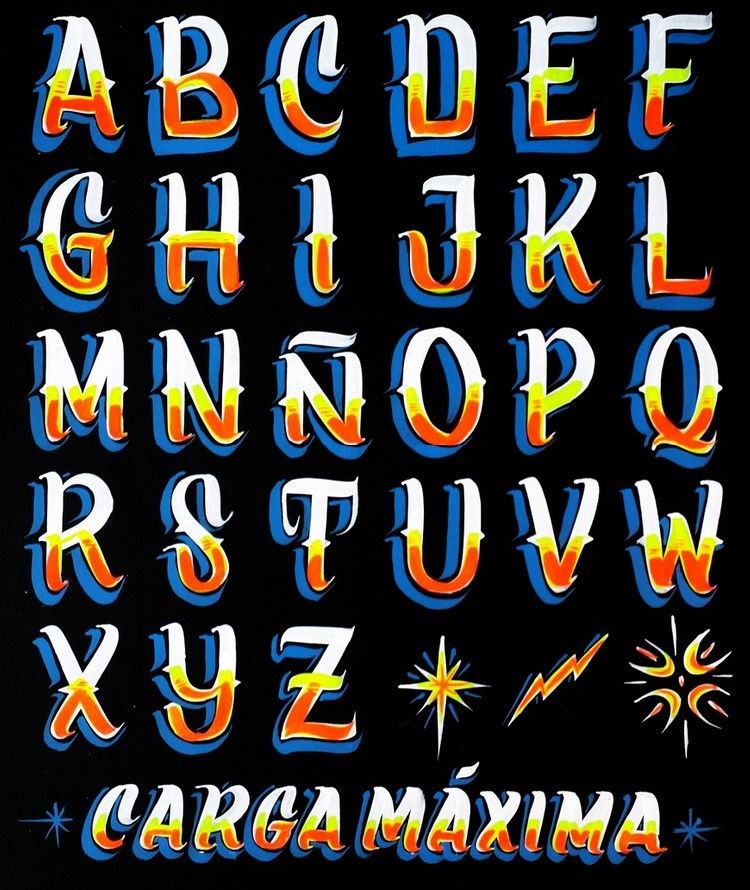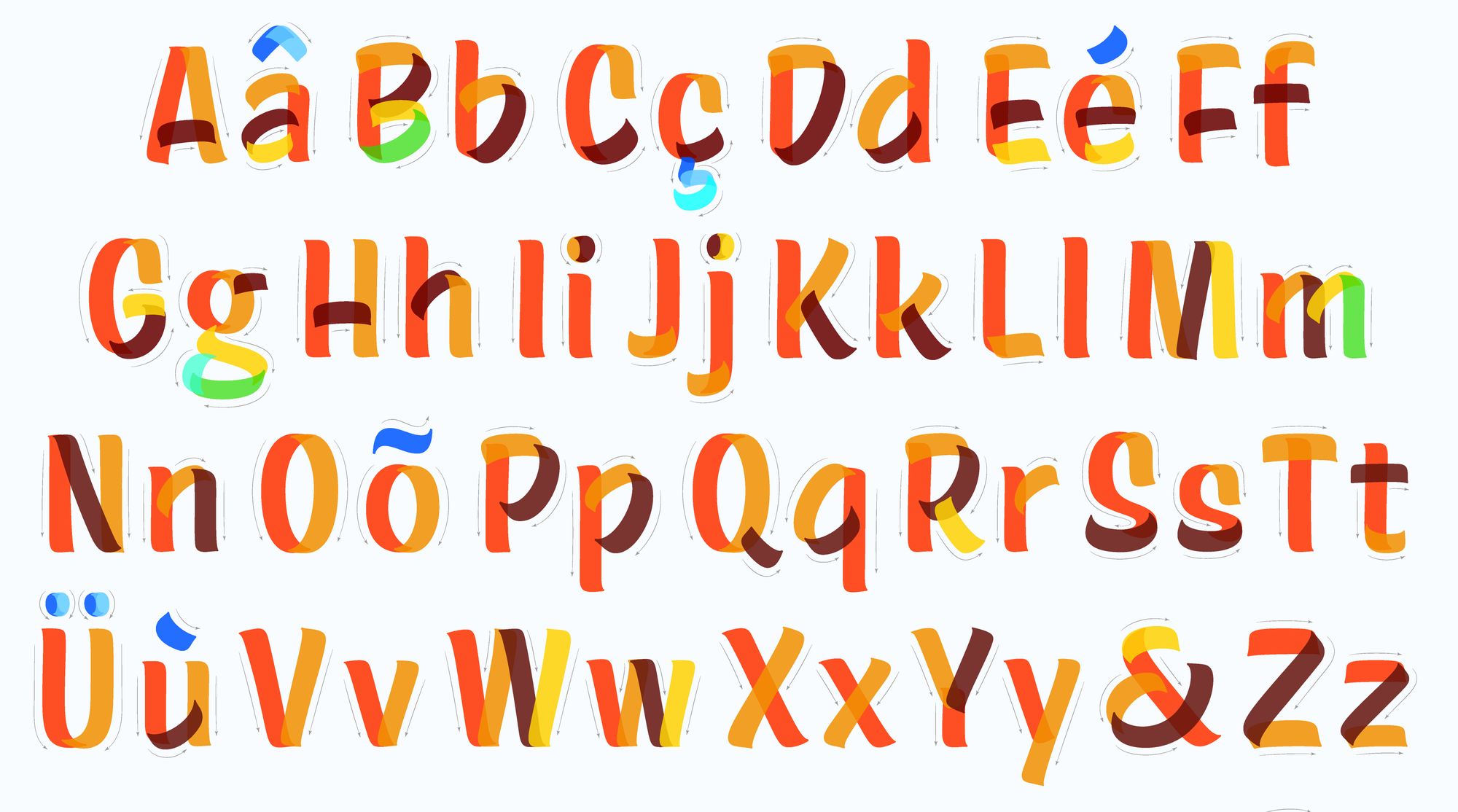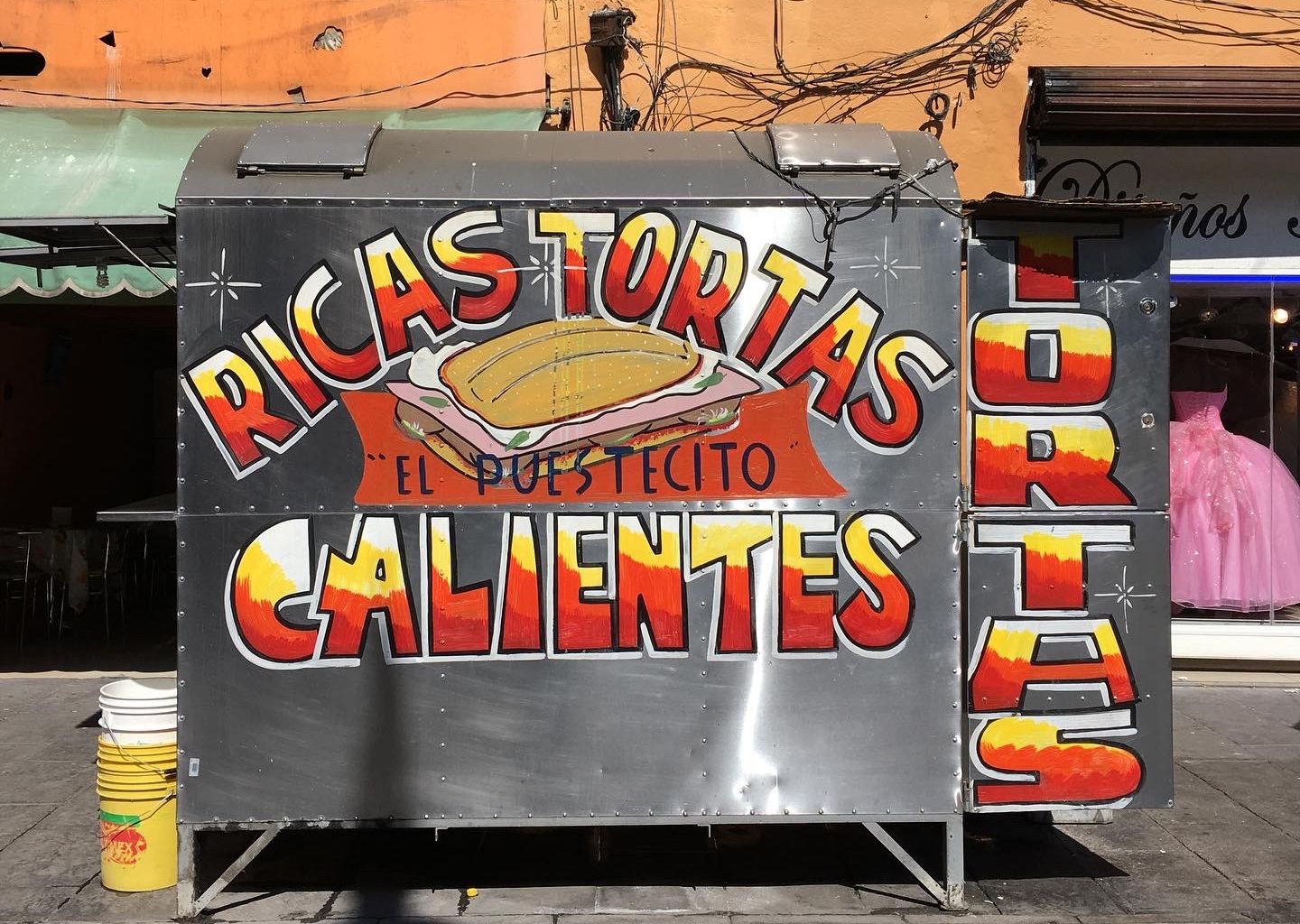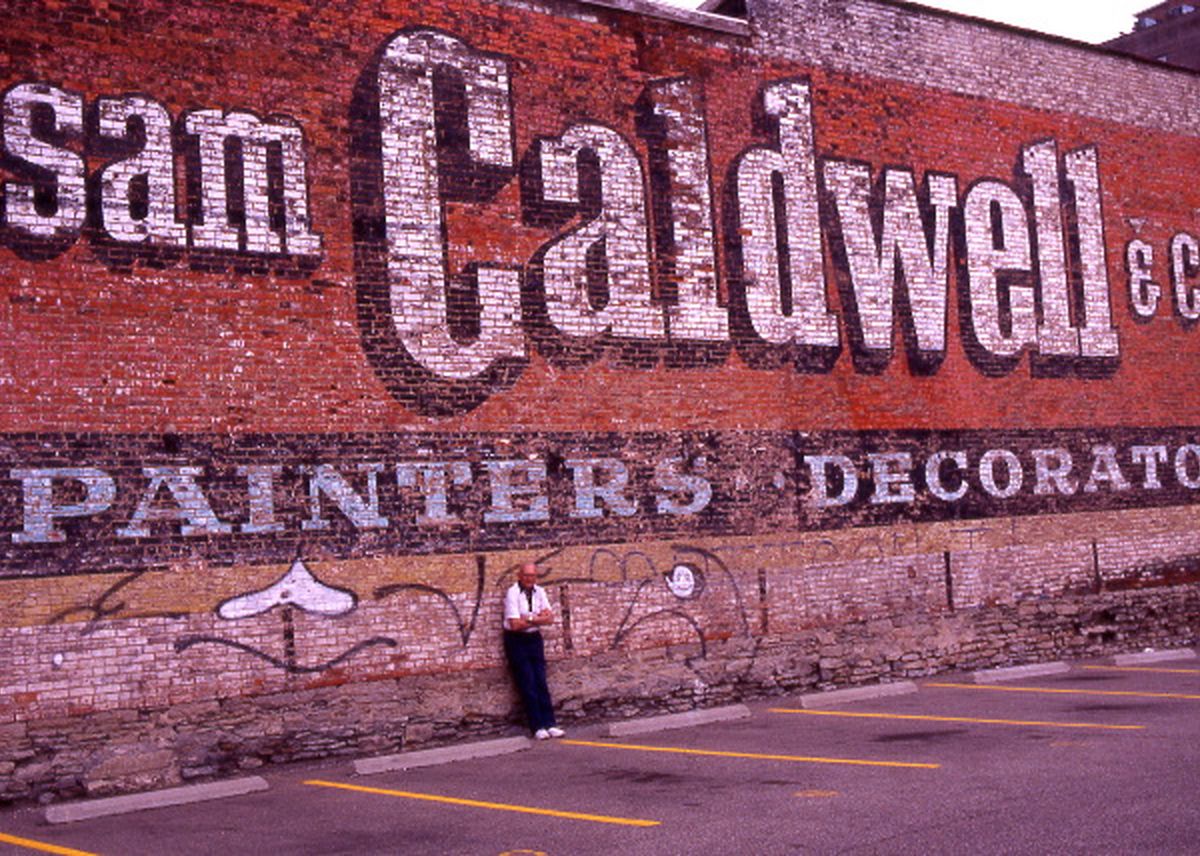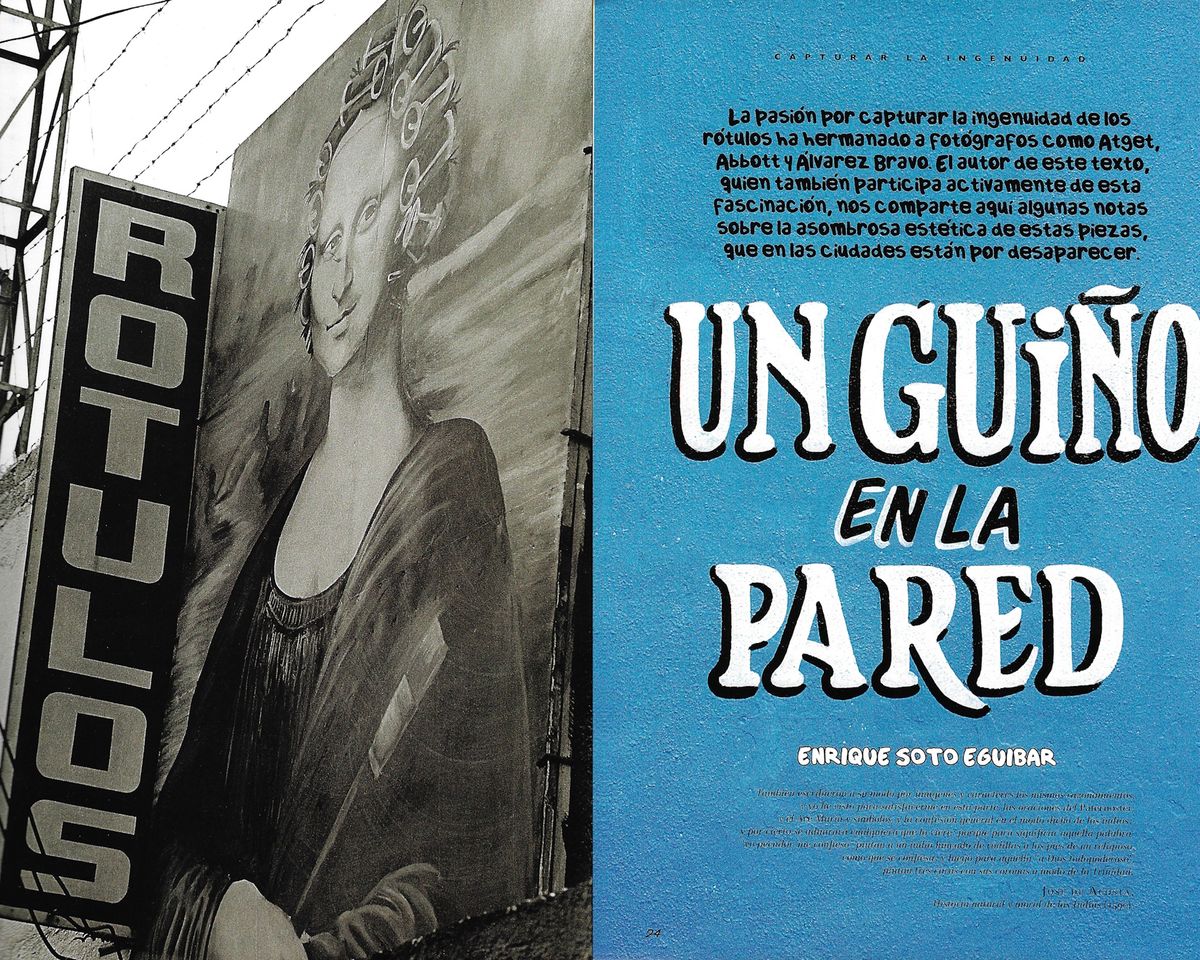Spotlight on Mexico: Blackletter, Rótulos, and More...
|
Older messages
Meet Chuck Keiger, Sam Caldwell's Cincinnati Walldog
Wednesday, September 6, 2023
Story of sign painter and walldog Chuck Keiger, painter of Cincinnati's Sam Caldwell ghost sign. BLAG (Better Letters Magazine) BLAG (Better Letters Magazine) Sign painter Chuck Keiger, a few years
Dapper Signs: Sign Painter, Human, Legend
Tuesday, August 29, 2023
James Cooper, aka Dapper Signs, 1981–2023. RIP. BLAG (Better Letters Magazine) BLAG (Better Letters Magazine) James Cooper, Dapper Signs, Glasgow, 2016. While I was away last week, I received the heart
'A Wink on the Wall' from Mexico's Other Muralism
Thursday, August 24, 2023
Join the Adventures in Mexican sign painting with Enrique Soto Eguibar and Artes de México. BLAG (Better Letters Magazine) BLAG (Better Letters Magazine) Interior page spread of 'Sign Painting: The
London Calling: A Personal Perspective
Thursday, August 17, 2023
Reflections on London Calling: Letterheads 2018, five years after the international meet. BLAG (Better Letters Magazine) BLAG (Better Letters Magazine) The Full Monty: all four coloured wristbands from
Enjoy a Free Fileteado Porteño Lesson from Gustavo Ferrari
Monday, August 14, 2023
Start learning the Fileteado Porteño artform via the new online course from Gustavo Ferrari. BLAG (Better Letters Magazine) BLAG (Better Letters Magazine) La Milonga Tipica sign by Gustavo Ferrari in
You Might Also Like
10 Ways You're Damaging Your House Without Realizing It
Monday, March 3, 2025
Lenovo Is Showing off Quirky Laptop Prototypes. Don't cause trouble for yourself. Not displaying correctly? View this newsletter online. TODAY'S FEATURED STORY 10 Ways You're Damaging Your
There Is Only One Aimee Lou Wood
Monday, March 3, 2025
Today in style, self, culture, and power. The Cut March 3, 2025 ENCOUNTER There Is Only One Aimee Lou Wood A Sex Education fan favorite, she's now breaking into Hollywood on The White Lotus. Get
Kylie's Bedazzled Bra, Doja Cat's Diamond Naked Dress, & Other Oscars Looks
Monday, March 3, 2025
Plus, meet the women choosing petty revenge, your daily horoscope, and more. Mar. 3, 2025 Bustle Daily Rise Above? These Proudly Petty Women Would Rather Fight Back PAYBACK Rise Above? These Proudly
The World’s 50 Best Restaurants is launching a new list
Monday, March 3, 2025
A gunman opened fire into an NYC bar
Solidarity Or Generational Theft?
Monday, March 3, 2025
How should housing folks think about helping seniors stay in their communities? ͏ ͏ ͏ ͏ ͏ ͏ ͏ ͏ ͏ ͏ ͏ ͏ ͏ ͏ ͏ ͏ ͏ ͏ ͏ ͏ ͏ ͏ ͏ ͏ ͏ ͏ ͏ ͏ ͏ ͏ ͏ ͏ ͏ ͏ ͏ ͏ ͏ ͏ ͏ ͏ ͏ ͏ ͏ ͏ ͏ ͏ ͏ ͏ ͏ ͏ ͏ ͏ ͏ ͏ ͏ ͏ ͏ ͏ ͏ ͏ ͏
The Banality of Elon Musk
Monday, March 3, 2025
Or, the world we get when we reward thoughtlessness ͏ ͏ ͏ ͏ ͏ ͏ ͏ ͏ ͏ ͏ ͏ ͏ ͏ ͏ ͏ ͏ ͏ ͏ ͏ ͏ ͏ ͏ ͏ ͏ ͏ ͏ ͏ ͏ ͏ ͏ ͏ ͏ ͏ ͏ ͏ ͏ ͏ ͏ ͏ ͏ ͏ ͏ ͏ ͏ ͏ ͏ ͏ ͏ ͏ ͏ ͏ ͏ ͏ ͏ ͏ ͏ ͏ ͏ ͏ ͏ ͏ ͏ ͏ ͏ ͏ ͏ ͏ ͏ ͏ ͏ ͏ ͏ ͏ ͏ ͏
“In life I’m no longer capable of love,” by Diane Seuss
Monday, March 3, 2025
of that old feeling of being / in love, such a rusty / feeling, ͏ ͏ ͏ ͏ ͏ ͏ ͏ ͏ ͏ ͏ ͏ ͏ ͏ ͏ ͏ ͏ ͏ ͏ ͏ ͏ ͏ ͏ ͏ ͏ ͏ ͏ ͏ ͏ ͏ ͏ ͏ ͏ ͏ ͏ ͏
Your dishwasher isn’t a magician
Monday, March 3, 2025
— Check out what we Skimm'd for you today March 3, 2025 Subscribe Read in browser Together with brad's deals But first: 10 Amazon Prime benefits you may not know about Update location or View
My 10 year anniversary of being single: exclusive extract from my book
Monday, March 3, 2025
Single: Living a Complete Life on Your Own Terms is out now ͏ ͏ ͏ ͏ ͏ ͏ ͏ ͏ ͏ ͏ ͏ ͏ ͏ ͏ ͏ ͏ ͏ ͏ ͏ ͏ ͏ ͏ ͏ ͏ ͏ ͏ ͏ ͏ ͏ ͏ ͏ ͏ ͏ ͏ ͏ ͏ ͏ ͏ ͏ ͏ ͏ ͏ ͏ ͏ ͏ ͏ ͏ ͏ ͏ ͏ ͏ ͏ ͏ ͏ ͏ ͏ ͏ ͏ ͏ ͏ ͏ ͏ ͏ ͏ ͏ ͏ ͏ ͏ ͏ ͏ ͏
Selena Gomez Shut Down The Oscars Red Carpet In This Spectacular Gown
Monday, March 3, 2025
10/10. The Zoe Report Daily The Zoe Report 3.2.2025 Selena Gomez Shut Down The Oscars Red Carpet In A Spectacular Gown (Red Carpet) Selena Gomez Shut Down The Oscars Red Carpet In A Spectacular Gown 10

